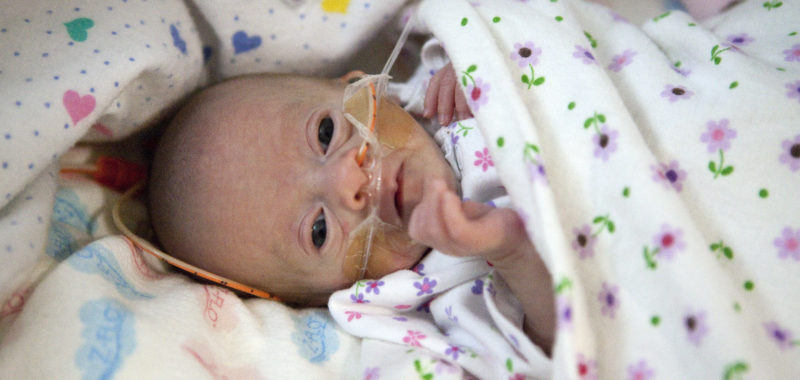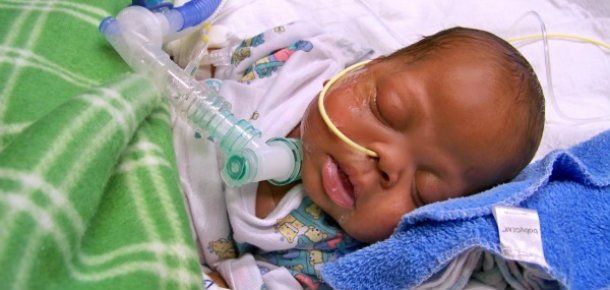In many ways, prematurity is a mystery to both clinicians and researchers alike. For a long time, it was seen as unpredictable and inevitable. Over the last few decades, medical and research communities have focused their efforts on bettering the health of premature babies, which has improved their outcomes to a certain extent. However, this approach does not address why it happens and how to prevent it.
Unfortunately, even with more focused research efforts recently on prevention, there is still a lot we don’t understand. In fact, we don’t know what causes it in about 50% of the cases.
What we have learned through medical practice and research over the years is that there are certain risk factors that can be associated with preterm birth. What might not be well known, is how they increase risk.
6 Factors That Can Increase The Risk of Premature Birth
Having a previous preterm birth
We don’t know exactly why, but having a previous preterm birth makes a mother more likely to have another preterm birth. What we do know is that there are genetic and other familial factors associated with prematurity and it generally runs on the mother’s side, but we do not know to what extent. As a way to help families understand their risks better and to improve outcomes, we host a one-time prevention consultation service for women at risk of preterm birth before they become pregnant or in early pregnancy (less than 24 weeks).
A low BMI before conception
Mothers who are underweight and become pregnant have a higher risk of delivering prematurely. We contribute this to the significant nutritional reserves and support that pregnancy requires, especially in the third trimester.
A high BMI before conception
Having a high BMI before conception increases the chances for high blood pressure or diabetes during pregnancy. High blood pressure can be associated with preeclampsia during pregnancy, which if left untreated can lead to serious complications for both mom and baby.
Intervals between pregnancies
Mothers who have less than twelve months’ time between the birth of the previous baby and conception of the subsequent baby have a higher risk for pre-term birth. We suspect that this is due to the maternal nutritional status at the time of conception. Significant nutritional resources go into the maternal system and macronutrients need to be replenished to fully support the next baby. We and others have found that the optimal spacing between birth and conception is 12 to 24 months.
Smoking during pregnancy
I realize this is an obvious one, because mothers are aware that smoking can adversely affect pregnancy. But what might not be as well-known is how it affects the placenta. Smoking can compromise fetal well-being by inhibiting how the fetus receives nutrition through the placenta. In other words, babies born to mothers who smoke tend to weigh less because they’re not receiving adequate nutrition.
Infections during pregnancy
Infections such as urinary tract infections and bacterial vaginosis during pregnancy can lead to preterm birth as well. The inflammation related to these infections can further predispose the mother’s immune system to stimulate the uterus to begin labor. While infections should be treated early with antibiotics and eradicated, clinical trials have shown that these efforts may not always prevent the preterm birth from occurring
Prematurity can affect babies from all populations, demographics, and socioeconomic classes. In numbers, it touches one in nine babies born in the United States, and a staggering one in eight in the Greater Cincinnati area. Until we have determined the causes of prematurity, good prenatal planning is the best strategy for improving outcomes for mother and baby.
We need to have a better understanding of what causes it in order to prevent it, and we believe that research is the key to unlocking the mystery of prematurity. Our researchers in the Center for Preterm Birth and others across the country are focused on examining the complex problem of preterm birth from every angle. We’re grateful to be funded by the March of Dimes to further our efforts and are honored to be a part of their Prematurity Research Center Ohio Collaborative. I truly believe that if we as researchers and clinicians are to make a major impact on premature birth, we need collaborate with other institutions from diverse disciplines by sharing perspectives, databases and ideas.
If you have questions, or would like to request an appointment, please contact our Center for Prevention of Preterm Birth.





ok all those things sound reasonable, but i did not have or do any of those. My husband and i waited about 4 1/2 yrs before trying. I never smoked or drink. I did not do drugs or was skinny or have a high bmi. Or any type of infections. My second child came at 27 1/2 wks back on 2/5/05 with no reason for pre term delivery. By bp never was high. Could there have been other causes because to the day i still do not know why i went into early labor.